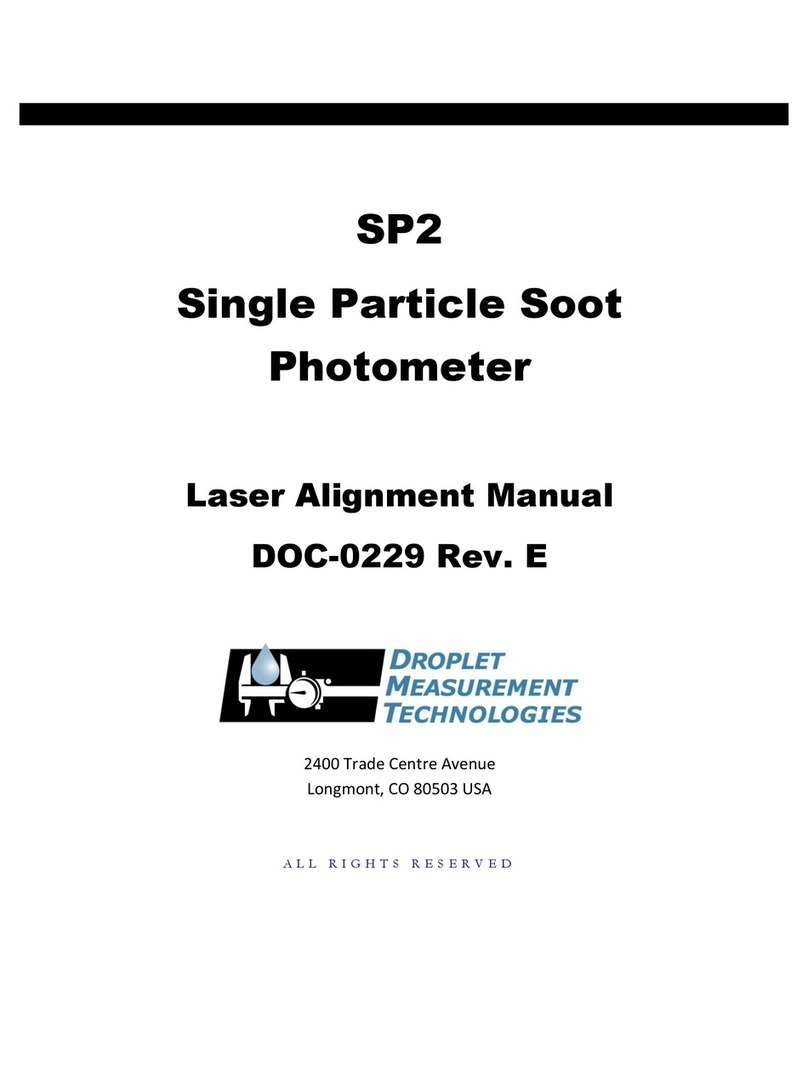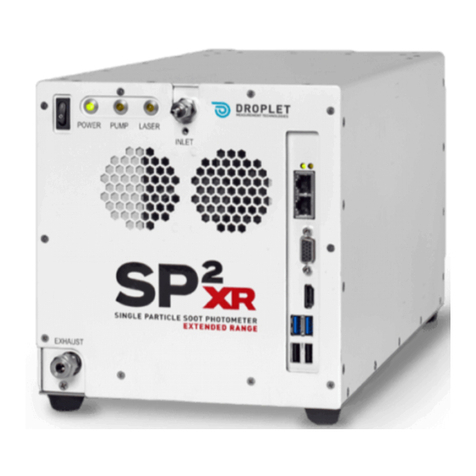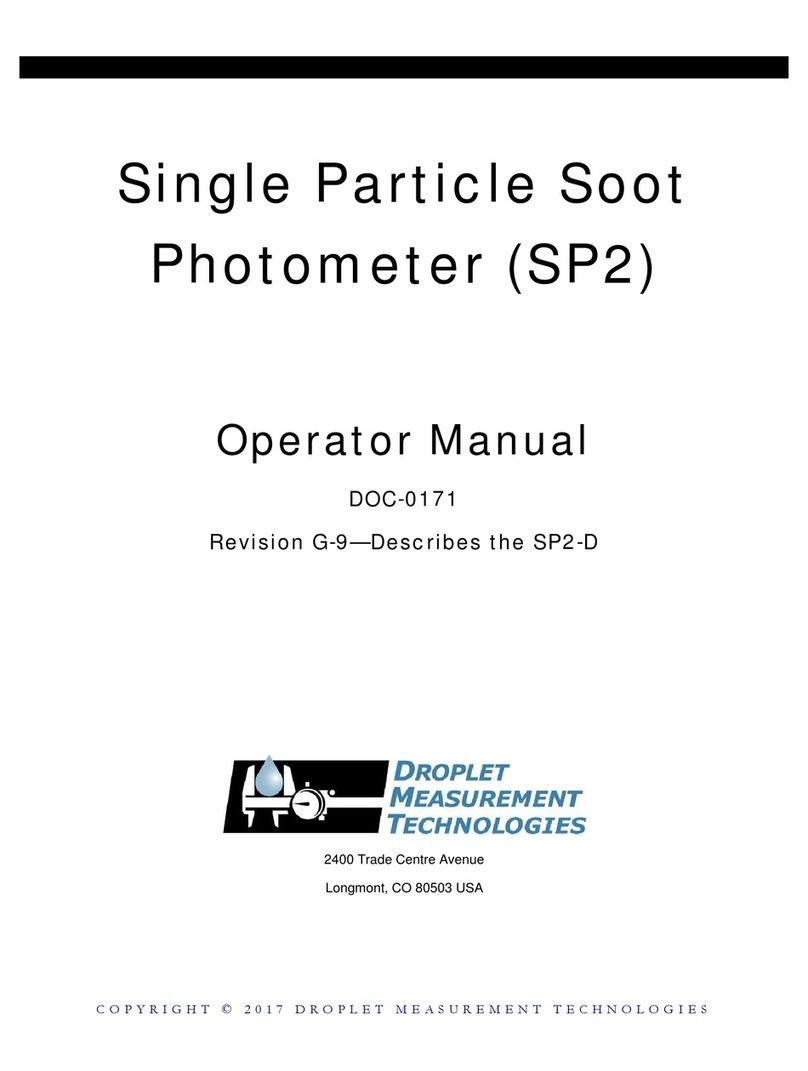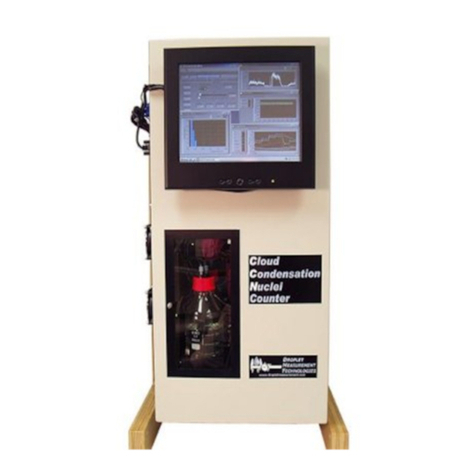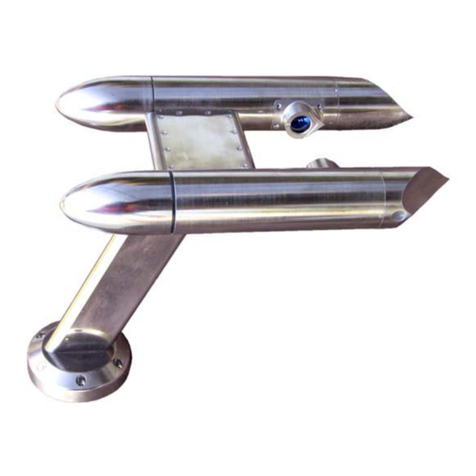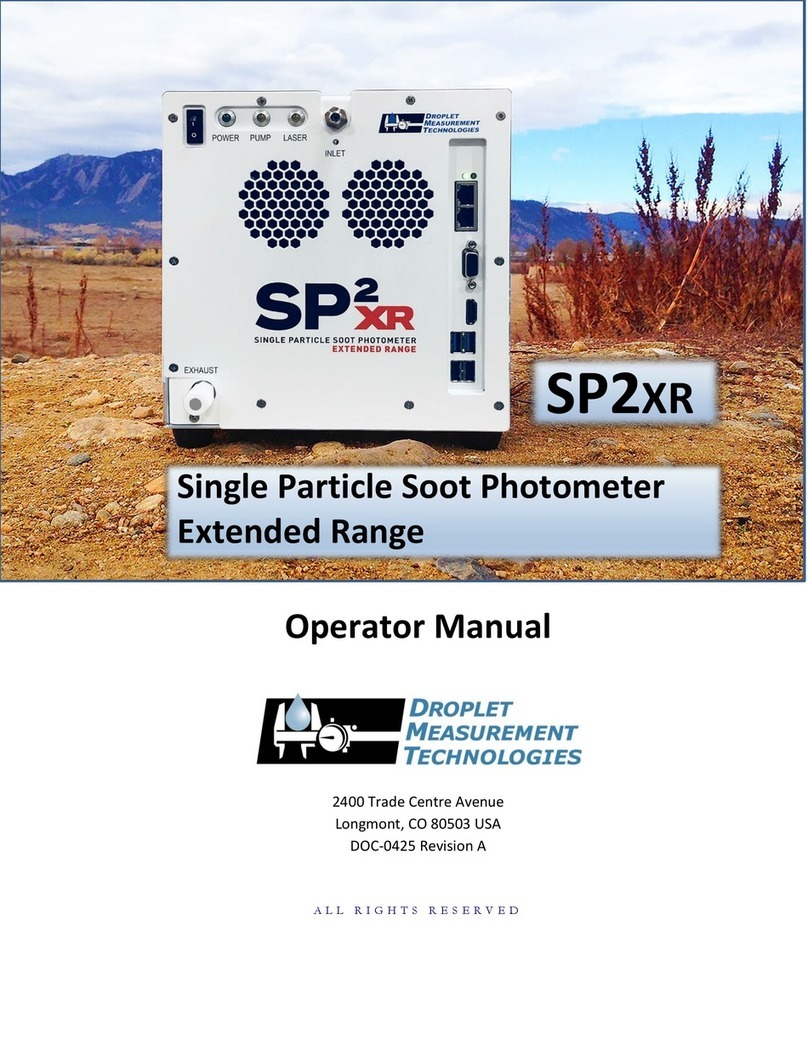Cloud Aerosol Spectrometer-Depolarization Option (CAS-DPOL) Manual
DOC-0167 Rev E-3 5
© 2018 DROPLET MEASUREMENT TECHNOLOGIES
Overview
The depolarization version of the cloud aerosol spectrometer (CAS-DPOL) is a third-generation
instrument. The first-generation multi-angle aerosol spectrometer (MASP) was developed in 1992
(Baumgardner, 1996), and was followed by the second-generation cloud aerosol spectrometer
(CAS) that is part of the cloud aerosol and precipitation spectrometer (CAPS) developed in 2000
(Baumgardner et al., 2001). The primary difference between the CAS-DPOL and the CAS is the
addition of a method to measure the amount of depolarization caused by aspherical particles so
that the instrument can more sharply differentiate water from ice in clouds or dust and biological
particles from other aerosol particles.
The following sections summarize the theoretical underpinnings of the CAS-DPOL design and then
describe how they are implemented in the optical configuration. The methodology of calibrating
the CAS-DPOL follows in section 3.0 and then examples are discussed to show how the
measurements can be evaluated to estimate the asphericity.
Theory and Implementation
1.1 CAS Design
The CAS was originally developed as an instrument for airborne studies of aerosol and cloud
particle properties (Baumgardner et al., 2001). It uses the measurement of light scattered from
individual particles to derive the diameter assuming sphericity. Mie scattering theory is applied
with the additional assumption of particle refractive index and known wavelength of the incident
light—in this case, that of the laser used to illuminate the particles. The scattered light in forward
and backward cones of 4 to 12º and 168 to 176º, respectively, is collected by the optical system as
shown in Fig. 1.
The light scattered in the forward direction is measured by two detectors, one with an optical mask
that restricts scattered light from particles that are farther than 0.75 mm either side of the center
of focus (COF) and one that will see light scattered from particles in all parts of the beam. A masked
detector, called the qualifier, is used to qualify particles in the Depth-of-field (DOF), where the DOF
is the region ± 0.55 mm either side of the COF. The detector without the mask, the sizer, generates
a signal that is compared to the qualifier and particles are only accepted when the qualifying signal
is larger than the sizer. Note that the beam splitter that divides the scattered light and delivers it to
the qualifier and sizer is 70/30; this means 70% is delivered to the qualifier, and 30% to the sizer.
This is done to ensure a sharp cut-off for particles outside the DOF.












